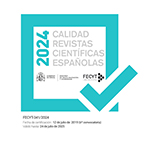The sources of women’s speech in the Elegy by Madonna Fiammetta
Abstract
In the Elegy of Madonna Fiammetta, Giovanni Boccaccio writes through the eyes of a young woman adopting a first-person narrative in order to recount an intimate love – but also psychological – experience. The main source can be found in the Heroides, from which the author resumes the modalities of the female monologue. Furthermore, he tries to give a moral purpose to the story along the lines of the medieval limits of Ovid’s exegesis. Therefore, this article aims to examine the persuasive strategies and rhetorical devices employed in the woman’s speech and in the exemplary narrative – for the dialogic parts as well as the soliloquies in which the narration is structured. Some works has been taken into consideration in order to execute an accurate source research. These include various classical and Medieval Latin texts recorded by Boccaccio himself in his work Zibaldoni and the vernacular literary tradition of the Italian area – among which Dante’s Vita Nova stands out above all others. Moreover, some French works that the author had the opportunity to find out during his stay at the Angevin court in Naples has been examined.
Downloads
Article download
License
In order to support the global exchange of knowledge, the journal Cuadernos de Filología Italiana is allowing unrestricted access to its content as from its publication in this electronic edition, and as such it is an open-access journal. The originals published in this journal are the property of the Complutense University of Madrid and any reproduction thereof in full or in part must cite the source. All content is distributed under a Creative Commons Attribution 4.0 use and distribution licence (CC BY 4.0). This circumstance must be expressly stated in these terms where necessary. You can view the summary and the complete legal text of the licence.










